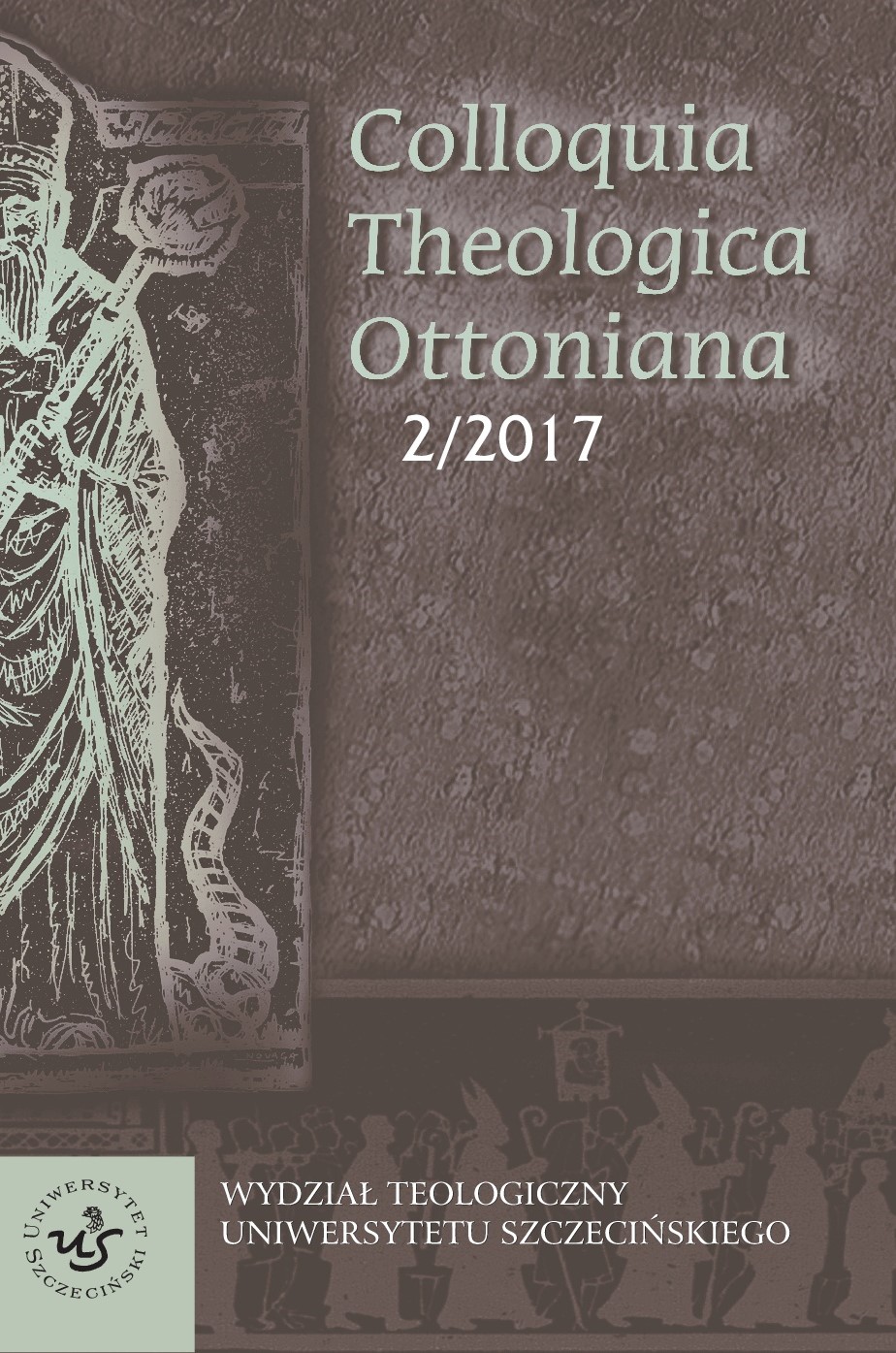Postać podobna Synowi Człowieczemu z kobiecym biustem przepasanym złotym pasem (por. Ap 1,13) - Teologiczne konsekwencje zróżnicowania terminów sth/qoj oraz mastoi, w przekładzie apokalipsy arcybiskupa Jana Marii Michała Kowalskiego używanym w Kości
A similar figure to the Human Son with a feminine bust girdle with gold belt (Cf. Ap. 1:13) - the theological consequences of the differentiation of the terms sth/qoj and mastoi, in the translation of the apocalypse of archbishop Jan Maria Michał Kow
Author(s): Kalina WojciechowskaSubject(s): Christian Theology and Religion, Theology and Religion
Published by: Wydawnictwo Naukowe Uniwersytetu Szczecińskiego
Keywords: Apocalypse of John; Son of Man; translation; Mariavitism; Catholic Mariavite; Church; Archbishop Jan Maria Michał Kowalski; Second Coming; Porousia; trinitology
Summary/Abstract: This article presents the differences in meaning of the Greek terms sth/qoj and mastoi, and their biblical contexts. In the description of the figure similar to the Son of Man in Revelation 1,13 was used the term mastoi,. Archbishop Jan Maria Michał Kowalski (1871-1942) – the translator of the Bible used in the Catholic Mariavite Church and in the Old Catholic Mariavite Church noticed this difference, and identified the figure in the Book of Revelation as female. According to Kowalski someone like a son of man dressed in a robe reaching down to his feet and with a golden sash around his breast is the founder of the Mariavitism – Feliksa Maria Franciszka Kozlowska (called by the Mariavites the Little Mother). This identification had consequences for mariavite theology – soteriology, eschatology and trinitology.
Journal: Colloquia Theologica Ottoniana
- Issue Year: 2017
- Issue No: 2
- Page Range: 227-245
- Page Count: 19
- Language: Polish

